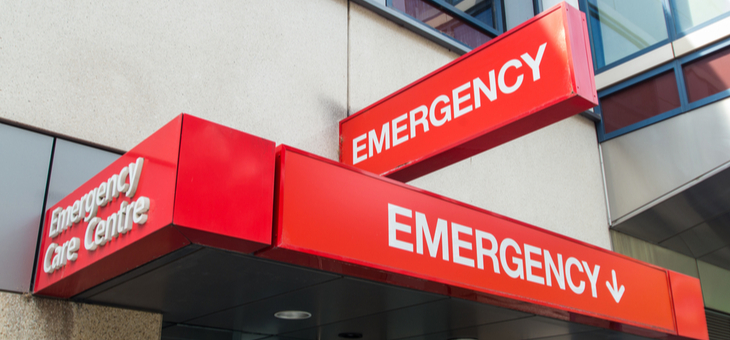There should be no hesitation when you have to call an ambulance in an emergency situation, but some people rushed to the hospital are surprised at being left with a hefty bill.
Research from Finder shows nearly one in three Australians wrongly believes ambulances are free under Medicare. Around 5.7 million people think that the cost of their ambulance (if needed) would be wholly subsidised by the government.
Read more: What’s not covered by Medicare?
Perhaps more worryingly, one in 10 (8 per cent) has caught public transport because they didn’t want to pay for an ambulance.
Medicare won’t cover your ambulance costs. Without private health cover, this can potentially leave you hundreds or thousands of dollars out of pocket.
If you’re a Queensland or Tasmanian resident you may be confused; in these states, the state government provides free emergency ambulance services.
In the other states and territories though, ambulance services are covered either by private health insurance or are out of pocket.
The out-of-pocket costs vary from state to state, with some charging a fee per kilometre and other states charging a single set fee depending on the type of call-out.
And while Tasmania covers the costs, it doesn’t have reciprocal agreements with all other states and territories. So, you may be out of pocket if you have to call an ambulance while travelling.
The cost also still applies if someone else calls an ambulance for you – even if you refuse service.
The costs of an ambulance
New South Wales
The fee for an emergency ambulance is $401, that’s for road, fixed wing or helicopter. An additional charge of $3.62 per kilometre applies (from the ambulance station to your pick-up address, to the destination and back to the ambulance station).
The maximum amount you can expect to pay is $6571. These amounts are reflective of 51 per cent of the cost of an ambulance service, with the NSW government providing a 49 per cent subsidy.
Some NSW ambulance services are provided free of charge to those eligible for exemptions. For more information about the criteria for exemptions, visit NSW Ambulance.
Read more: Hospitals passing the buck for ambo bills
Queensland
If you’re a Queensland resident, your ambulance services are provided free of charge, no matter where you are in the country.
You’re covered when it comes to emergency pre-hospital ambulance treatment and transport Australia-wide as long as you can prove you’re a permanent Queensland resident and provide QAS with the required documents.
If you receive an invoice for ambulance cost while out-of-state, forward the invoice to the Queensland Ambulance Service who, if you’re eligible, will pay the invoice for you.
If you have to call an ambulance in Queensland but you’re not a resident, you will be responsible for the payment of any invoice issued.
Victoria
Victorians will pay more for an ambulance ride than anywhere else in Australia. Unless they have an Ambulance Victoria membership, concession entitlement or other coverage.
You’ll be left with a $1265 bill for an ambulance trip in the city or $1866 if you’re in a regional or rural area to cover the road cost.
If you need transport via the sky, you’ll be paying $3033 for a plane trip and up to $26,852 for a helicopter.
However, a year membership for Ambulance Victoria costs $96.70 for a family, and $48.35 for a single person.
A number of exceptions apply, visit Ambulance Victoria for more information.
South Australia
The minimum call-out fee for a non-emergency ambulance is $233 and $1044 in an emergency. There is also a per-kilometre fee of $6 in both situations.
Concessions and other exemptions apply, see SA Ambulance Service for details.
Western Australia
Fees in WA vary on the nature of the call-out. Life-threatening or urgent callouts will cost $1006 whereas non-urgent trips will cost $541. A patient transfer vehicle is also available but will cost a whopping $489.
Read more: How to save a life
WA residents over 65, and in receipt of an Australian government pension, are entitled to free ambulance services. Those aged 65 and over who do not receive an Australian government pension, are entitled to a 50 per cent discount on the cost of ambulance services.
See St John WA for more information.
Australian Capital Territory
ACT residents can expect to pay $982 (+$13/km for every kilometre travelled outside the ACT) for emergency ambulance treatment and transport.
For an emergency situation where you require treatment but no transport, you will receive a bill for $681.
Some age pensioners and concession card holders are exempt, see ACT Emergency Services Agency for details.
Northern Territory
A non-life-threatening emergency will cost you $370 in the NT. If the emergency is urgent, this cost increases to $815. For both types of call out an extra kilometre fee of $5.25 applies.
NT concession card holders may be entitled to free ambulance transport and St John NT Ambulance Services provide a membership model that could save you the hefty bill.
Tasmania
Ambulance services are covered by the state government for Tasmania residents if the emergency happens in Tasmania.
Tasmanian residents who are treated and/or transported by ambulance on the mainland will receive an invoice from the attending ambulance service. Informal reciprocal arrangements are in place covering the cost of emergency road ambulance between most states and territories except New South Wales, South Australia and Queensland.
If you are visiting from out of state, you will be issued an invoice. Visit Ambulance Services within Tasmania for more info.
Did you know ambulance services weren’t covered by Medicare? Do you think it’s fair to charge for an ambulance? Do you think it will put people off calling for one?If you enjoy our content, don’t keep it to yourself. Share our free eNews with your friends and encourage them to sign up.

